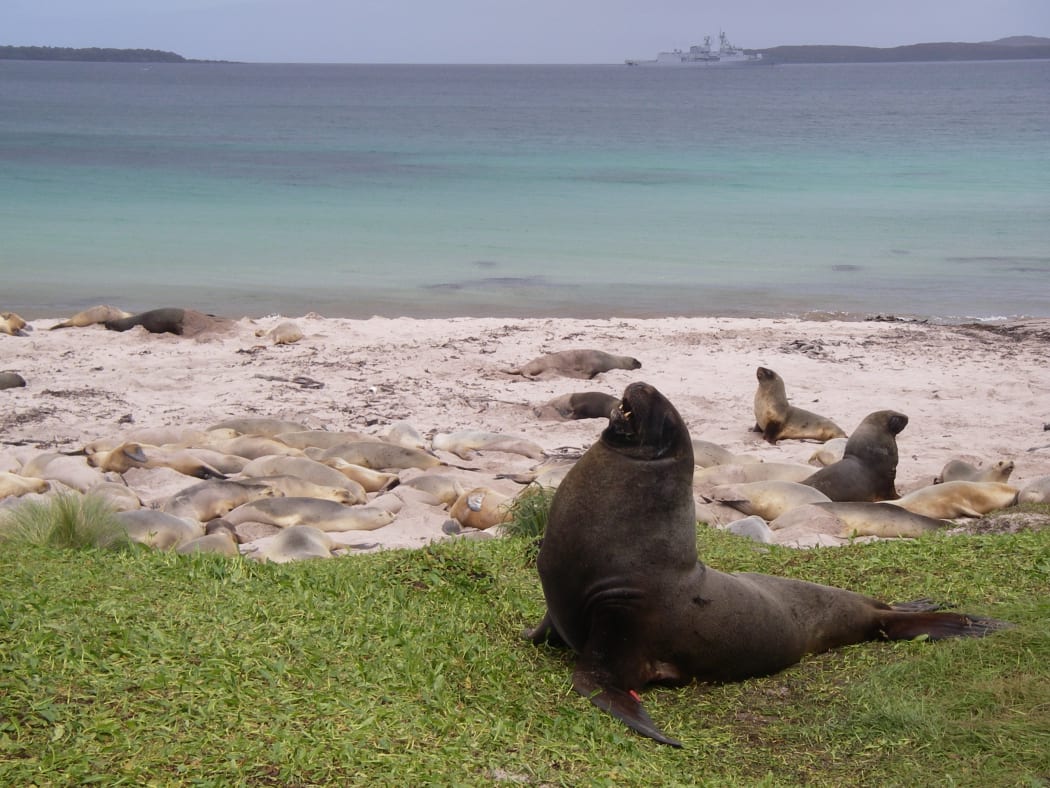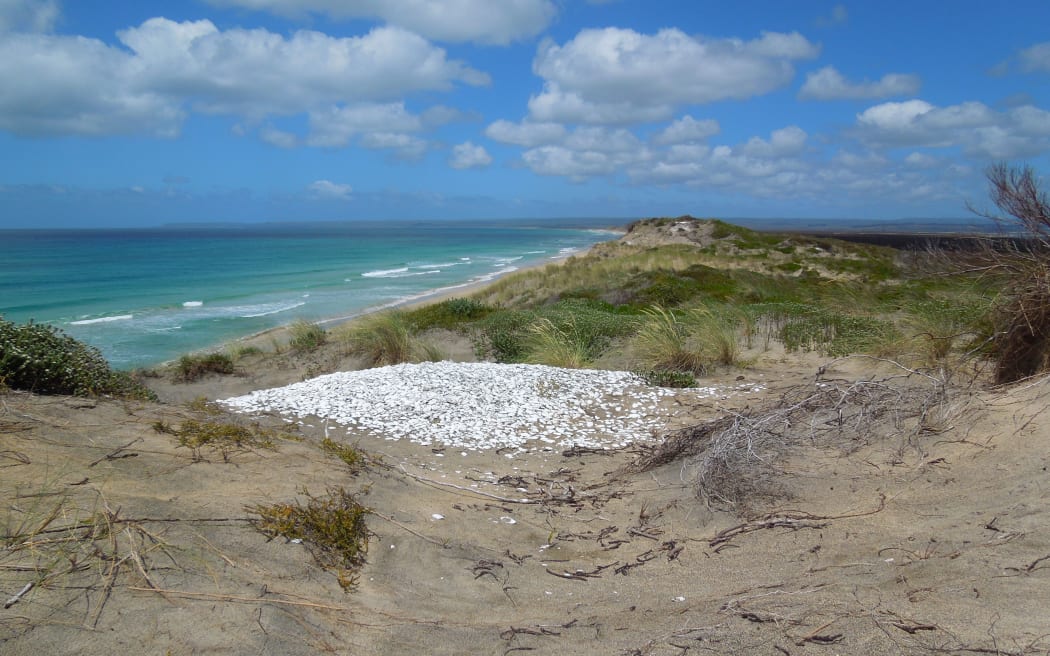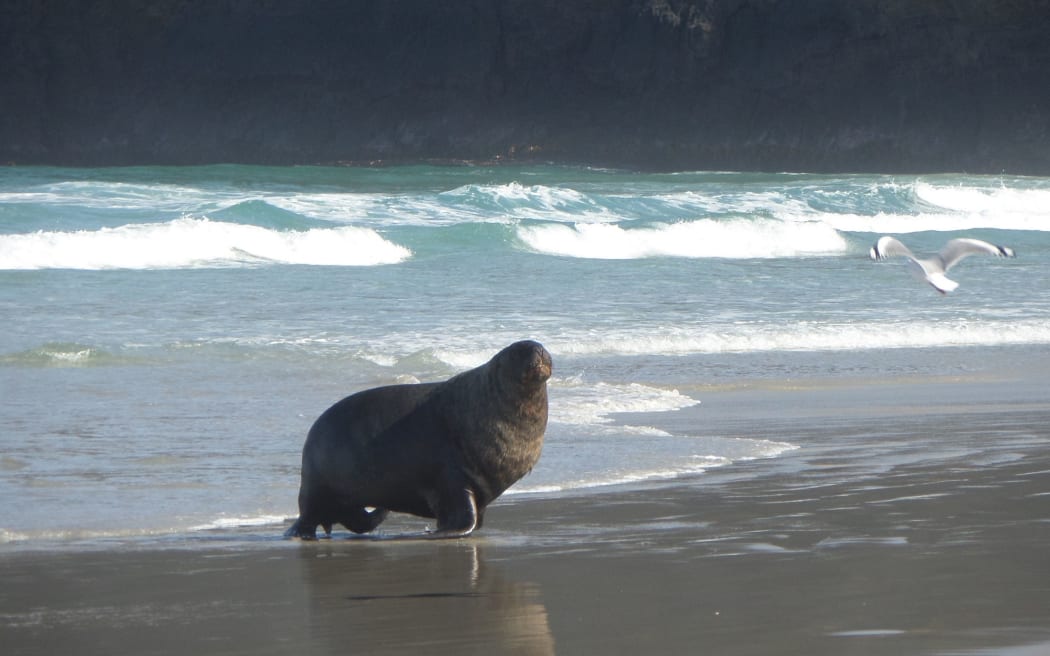Extinction data of a prehistoric Chatham Island species of sea lion shows modern by-catch levels will make New Zealand sea lions extinct within 50 years, scientists say.

A sub-adult male sea lion near the New Zealand sea lion colony on Enderby Island. Photo: RNZ / Alison Ballance
Otago University zoological researcher Nic Rawlence said the remote islands were once home to the sea lions that were driven to extinction by human settlement.
He said the Chatham Islands supported a large and diverse population of the sea lions, which would have looked very similar to the also extinct prehistoric NZ sea lion and the sub-antarctic Hooker's sea lion but were clearly genetically distinct from them.
Hunting was believed to be behind their extinction about 1650 AD.
Otago archaeologist Justin Maxwell said just one sea lion death per person each year in the Chatham Islands was enough to cause their extinction within 200 years of human settlement.
The scientists said their findings had important implications for the survival of modern-day sea lions which are often killed as by-catch from fishing.

A prehistoric Moriori midden, which contained the remains of the Chatham Island prehistoric sea lion, in Chatham Island's northeast. Photo: Supplied / Justin Maxwell
That ran counter to the government's findings on sea lion populations, in the Department of Conservation's draft Threat Management Plan, which appeared to dismiss.
Associate Professor Bruce Robertson said the plan dismissed the risks of by-catch, and the outlook for sea lions would be bleak unless measures were taken to mitigate it.
"The team's computer models suggest that current reported and unreported by-catch levels may be unsustainable for the long-term survival of the species," he said.
Dr Rawlence said the team's modelling showed sea lions could not withstand even low levels of by-catch, and the remaining populations of Hooker's sea lion would be extict within 50 years if measures to counteract it were not taken immediately.
Dr Rawlence said by-catch, especially of females, was the biggest threat to the continued survival of remaining Hooker's sea lion populations.
"You have to remember that bycatch of a female results in up to three deaths in total - the female, the dependant pup on land and the unborn pup. Bacterial outbreaks and drowning of pups are periodic events and only affect one generation, not repeated generations like by-catch."

A male New Zealand sea lion walks the beach at Sandfly Bay on the Otago Peninsula. Photo: Supplied / David Waters
The government's draft plan goes into consultation in August.
It suggested there were many factors putting sea lion populations at risk, including a new strain of deadly bacteria found at the Auckland Islands breeding sites, and pups falling into and drowning in mud holes.
Dr Rawlence said the group would be submitting to the consultation process, arguing that bycatch was the biggest threat faced by the sea lion populations.
He said there was not yet any research on the condition of sea lions after they escaped trawling nets thanks to the fishery industry's sea lion exclusion devices, including if it left them with head injuries or having their head held underwater for too long.
Research on that was essential and changing fishing from trawling to a jigging method could greatly mitigate by-catch, he said.



